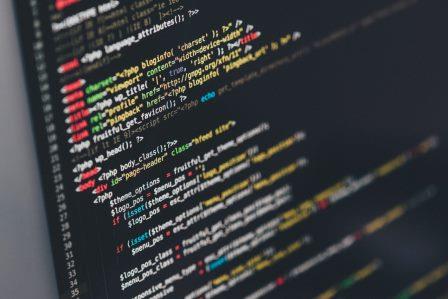CYCOGS ® brand of AI ML consulting
CYCOGS ® Artificial Intelligence Machine Learning (ML) implementation, design and consulting.

The CYCOGS experienced team is available for meaningful consultation in many
Artificial Intelligence (AI) / Machine Learning (ML) active topics.
Planning on properly using an AI / ML system in the forseable future? Promptly get your data collection going this instant!
Your first pivotal step is carefully collecting the appropriate quantity and essential quality of data and insuring its diligently prepared for its current purpose and what you may need for the future.
Data, from your own data, to any available data, is a valuable resource and a tool waiting to be used.
Machine Learning systems performance must be evaluated on reproducing known knowledge from collected data.
Collect your data now, as future uses have yet to be needed or discovered.
But needed data collected improperly becomes garbage. No amount of data preprocessing can overcome some fundamental problems.
With AI / ML systems, garbage in may lead to garbage out, no matter how much data mining is carefully performed trying to extract usable, actionable information out.
No preparation, possibly no successful future, but we can typcally help you with your data and AI / ML.
If you have a current need, the 
Machine Learning, represents a subset in the burgeoning field of Artificial Intelligence (AI), sometimes called Data Science / Statistical Learning / Probability Theory.
Machine Learning (ML) focuses on predictions using known properties or discovery of unknown properties. Most Machine Learning uses statistical techniques running on computing systems such as your corporate network to process data and non-programically learn from the data. Using back propagation can help verify the Machine Learning (ML) models and data. Sophisticated algorithms and Modeling can be utilized and developed to enable data driven decisions and predictions. Machine Learning (ML) can intentionally break the elaborate process of programming algorithms and the extensive debug and testing cycle with more of a black box approach. The Machine Learning predictive ability using computers relies on mathematical optimization, computational statistics, predictive analytics and data analysis. This is a small contrast to Expert Systems where the Expert System is preprogrammed with “Expert” Knowledge and decision-making abilities. We at the
The effective use of Machine Learning (ML) is not trivial or fool proof and problems can arise.
Such problems include Data Bias, (sometimes referred to as Variance Decomposition or Quantify Generalization errors), using training data that is not fully representative, over optimized, wrong model, etc., can lead to results in apparent error or skewed. The improper optimization and not minimizing the loss function must be sufficiently addressed. Human judgement may conveniently ignore or simply undervalue proper data representation, and the results could be useless in some or all situations. Other concerns are not fully validating the classification learning model, poor training data selection and faulty data interpretation. A weak model may not yield sensitivity, intentionally give false positives and experience other reliability issues. Learning models can also be overdone, called “over fitting the model.” Lastly, the collection, storage and consistent use of the pre and post data sets remains an ongoing concern. For an illustrative example, if you collected personably identifiable data 10 years ago, and a security breach liberated such confidential information, or if the conclusions were manipulated, ethical questions and issues will arise. The
The Machine Learning (ML) approach utilizes many innovative techniques and methods, depending on the specific need and target application.
ML uses classification schemes to carefully sort through the data, called Learning Classification Systems. (LCS) Systems which identify, learns or resolves rules, also called Rule-Based Machine Learning.The
If your data or elements can be classified into numerous categories using a distribution function and estimating possibilities, implement the Logistic Regression technique.
If your data or elements can be classified, using the Bayes’ theorem for a set of completely independent variables, use the Naïve Bayes classification model. See also Bayesian Networks.
If your data or elements can be classified or split into two categories to determine a mathematical function including classification and regression for the data, employ the Support Vector Machine method (SVM).
If your data or elements, (possibly non-linear and or complex) can be analyzed similar to the function of a biological brain consisting of one or more layers of a Neural Network (NN) / Artificial Neural Network (ANN), based on Perceptron’s and Probability Reasoning, utilize the Deep Learning technique.
If your data or elements can be placed into similar subsets, where these subsets can be called clusters. Such clusters can be analyzed based on cluster features such as similarity between cluster data and variations between different clusters. Implement the unsupervised Learning method of Clustering.
If your data or elements can be pre-programmed using encoded background knowledge as logical facts, resort to the Inductive Logic Programming method (ILP).

The CYCOGS ® Company can undoubtedly help with these
Machine Learning (ML),
learning task categories which can be based on several learning types.
One Learning Type comprises the Reinforcement Learning type in the form of punishment and reward as a feedback mechanism.Another type is Active Learning labeling over a restricted instance set.
The Un-Supervised Learning type of possibly unknown features and patterns is similar to the Semi-Supervised Learning type based on a training set which is missing some output targets.
The Supervised Learning type is where examples of input and outputs are taught in order to form general rules covering input to output relationships.

A look at Dimensionality Estimation / Reduction type of ML can map out distributions in one or more spaces.
The type of Developmental Learning (Robot Learning) cumulatively generates skills and solutions through Autonomous Experiences and Learning which may use Genetic Algorithms (GA).
Genetic Algorithms (GA) are directly related to Evolutionary Algorithms for solution determination and is a search heuristic.In Machine Learning, (ML) the data or elements may involve some preprocessing before being sent to the classification or prediction routines.
One learning algorithm used for preprocessing this precisely is the Representation Learning Algorithm.
In addition, data noise may be meaningfully reduced using space matrix representation from the Sparse Dictionary method, which is extremely useful in image analysis.

- Collaboratively develop an ML plan for your organization.
- Compile your select data and prepare it for use now and in the future.
- Enable you to discover value in the data and select data sources for the foreseeable future.
- Help setup ML systems and its training and proper verification, including choosing a classification type, preprocessing and independent analysis.

In some ways, Machine Learning (ML) seems to represent many terms, methods and alternate ways to achieve a desired outcome.
We at theThe AI Machine Learning space is evolving and complex, please contact us to assist you in preparing directly now. Contact information like your name, email address, title, company, and telephone number.
Contact: Send key questions and insightful comments about the Consulting in Artificial Intelligence, Machine Learning web site to the